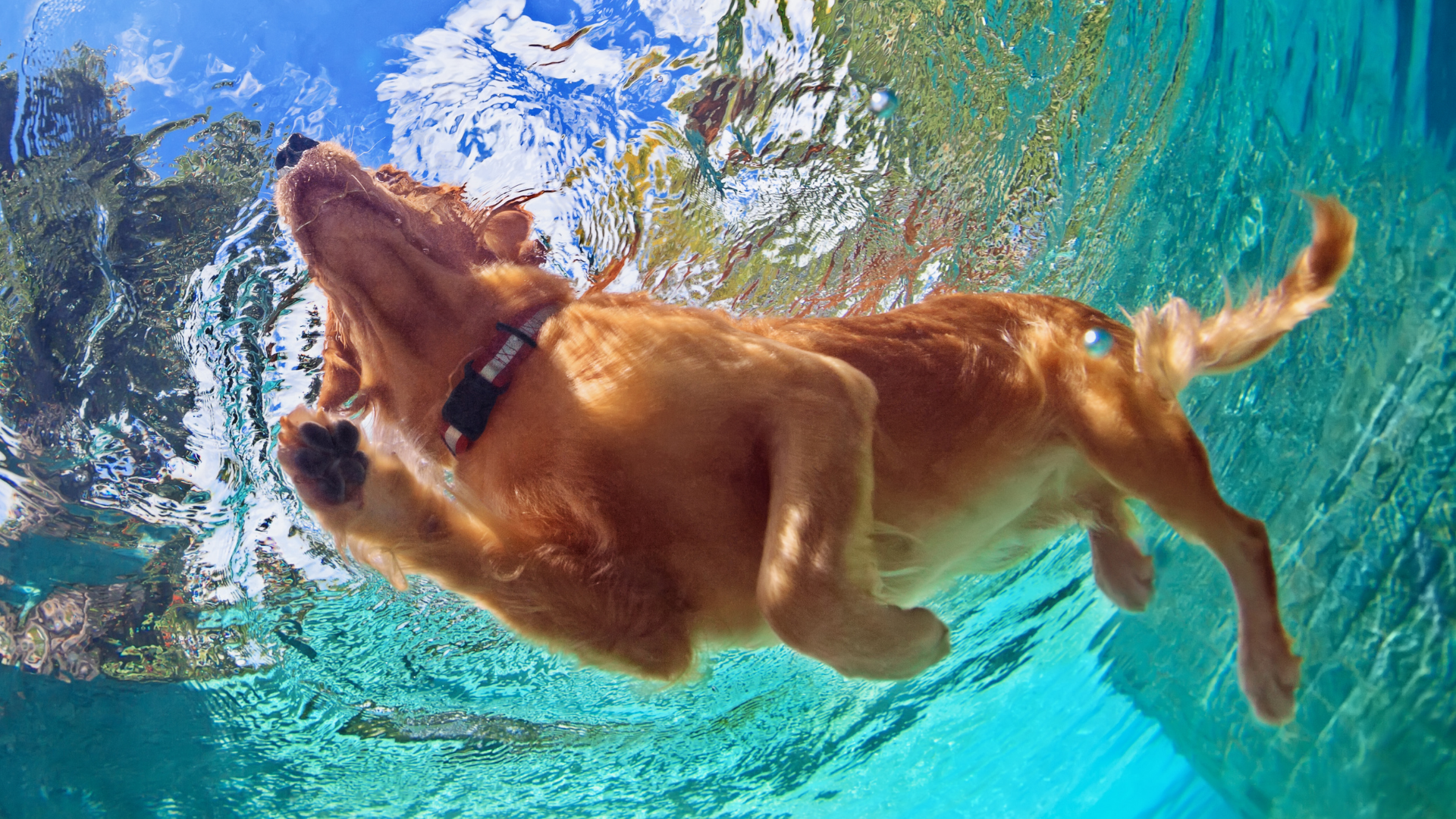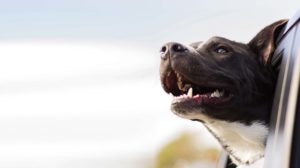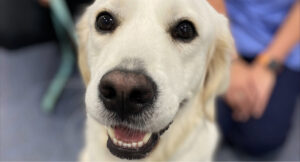Pet and pool safety
If you have a pool at home, it is important to have rules and preventative measures in place so everyone can safely enjoy cooling off.
- Pool fencing, gates and stairs: ensure gates are closed, mesh barriers are used to prevent smaller dogs from accessing the pool area and blocking or removing above ground pool steps to help avoid unsupervised access to the pool
- Swimming lessons: when teaching your dog to be a good swimmer, hop in the pool and encourage your dog to come for a swim. Don’t force or throw them in as you want them to be confident in doing it themselves. Be sure to stay close with arms ready to lend a hand and guide your dog in and out of the pool using the steps
- If your dog loves to jump in the pool after a ball, remember to give them rest breaks and check they aren’t swallowing the water as this can make them unwell
- For extra safety, there are plenty of dog life jackets on the market, but these should be used as an aid, not relied upon
Weather and enrichment
- Consider a shallow pet pool with fun toys in the shade. Ensure your dog can exit without assistance and the water is no deeper than their elbows to keep them safe
- Yummy ice blocks: freezing a mixture of fruit and vegetables (carrots, pumpkin, blueberries, banana) and meat can provide a long-lasting cool treat. Consult your Vet for a comprehensive list of safe foods if you’re unsure
- Dogs are susceptible to heat stroke. Brachycephalic breeds (meaning dogs with flatter faces), overweight pets, or dogs with very thick or black coats are more vulnerable. Many brachycephalic dogs already have breathing difficulties that are exacerbated by hot weather or overexertion. According to PetSure data (from 1/7/2019 -30/06/2020) British and French Bulldogs are the most likely to suffer from heat stroke, but any breed can be affected
- To help your pets avoid heat stroke, ensure they have access to a cool and shaded space outdoors. If indoors, ensure the area is well ventilated, and ensure pets have access to plenty of fresh water at all times.
- Avoid walking your dog in the hottest part of the day and test the ground yourself first. As a good rule of thumb, if you can’t hold your hand on the floor for a few seconds, it’s too hot for your pet’s paws. Remember also that if the sand at the beach is hot for your feet, it’s too hot for your dogs’ as well
- Treatment for heat stroke is generally covered under Accident and Illness pet insurance policies, with PetSure data showing an average treatment cost of just over $900 from the past year (from 1/7/2019 -30/06/2020) for a single treatment – or just over $7,000 as the highest single treatment cost over the same period. Refer to your policy documents and Product Disclosure Statement for more information on your cover (check our pet insurance partners at petsure.gholab.com.au/partners)
- Brain exercise: indoor training sessions are a good alternative to outdoor exercise when it is too hot. Keep sessions short and positive for good results
- And remember – never leave dogs unattended in hot cars.
Barbeques and socialising
Your dog may not be used to having visitors. To help them feel safe and away from potential hazards, keep these tips in mind.
- Provide your dog a safe space away from people and children for them to unwind such as a crate or pen. Additionally, a pen or crate will keep them safe from sneaking out the front door or gate as people come and go. Learn more about crate training on our Knowledge Hub here
- Common BBQ foods such as onions, bones and skewers are all very dangerous for dogs. Last year (from 1/7/2019 -30/06/2020) PetSure recorded more than 700 suspected cases of onion toxicity. Treatment for onion toxicity is generally covered under Comprehensive Accident and Illness pet insurance policies. Refer to your policy documents and Product Disclosure Statement for more information on your cover (check our pet insurance partners at petsure.gholab.com.au/partners)
Making fireworks fun for your pet
If you’ve welcomed a new furry friend into your family this year, it is important to prepare them early for the end of year celebrations and fireworks.
Here are our top tips to start now to help your pup with noise sensitivity or fears (new or existing):
- Ensure your dog has a safe, comfy space for only them to rest such as a crate. You can check out our article for crate training on our Knowledge Hub here
- If your dog has an existing fear or phobia of fireworks:
- Ensure your house and yard is secure
- Keep exposure to external sound minimised by closing windows and doors, limiting sounds indoors such as loud music or people
- Allow your pets space and time to choose where they are most comfortable, allowing them time to decompress once fireworks have finished
- Contact your Veterinarian as soon as possible for suitable options for your pet
- In case of an emergency – check now with your Vet that your pet’s microchip details are up to date. Many pets manage to escape their homes during holiday celebrations, so it’s always a good idea to be extra careful to ensure your furry friends’ safety during this period.
So, with a little planning and a few tips for your pets, everyone can have fun in the sun this summer. Wishing you all a happy ending to 2020 from PetSure!
Pet insurance can help by covering a portion of the eligible vet bill if the unexpected happens. Because it is difficult to predict the costs of veterinary care, it can help to have measures in place to help prepare for the unexpected. Check out our partner network and explore our policy tools to find a pet insurance policy.
Not all conditions or items are covered by Pet Insurance. Refer to the applicable Product Disclosure Statement for information about coverage and exclusions.








